Making a Packer – In 6,000 Easy Steps
When people see the oilfield technology at work at Fairbank Oil Fields, they see wooden pumpjacks, cast iron field wheels, the jerker system, and the powerhouses running massive wheels and belts.
What they don’t see is the work that is done to keep all the underground tubing and parts of an oil well in perfect running order.
Thanks to photographer Al Hayward of Brigden, we now have an excellent record of Charlie Fairbank showing all the many steps of making a packer.
What’s a packer? It is plug made of jute twine and one packer is inserted in each of our 350 oil wells. Its job is to isolate the oil formation from the air and water above it. This creates a vacuum for the oil formation and allows the working barrels and the oil well valves to take the oil to surface.
Historic producers who are working in Canada’s earliest established oil fields in Oil Springs, Petrolia and Bothwell are the ones who use and make packers. The packers they make today have evolved from the 1860s when a calf skin filled with flaxseed finally stopped Canada’s uncontrolled first gusher. It’s the Shaw Well of 1862 that is here at Fairbank Oil Fields.
Packers are reused and each year Charlie Fairbank remakes approximately 50 of them. It’s a specialized and onerous job, each one taking about three hours to complete. The jute he uses is imported from Bangladesh.
Making a packer is not a skill learned from a book. You have to learn from an expert with decades of experience. The one-on-one practice sessions take a while. Charlie was taught back in the 1970s by oil producer Elwood Ayrheart of Oil Springs. This skill has been carried through generations.
While Al Hayward more than 120 photos in this series on the packer, here are five that show different steps.
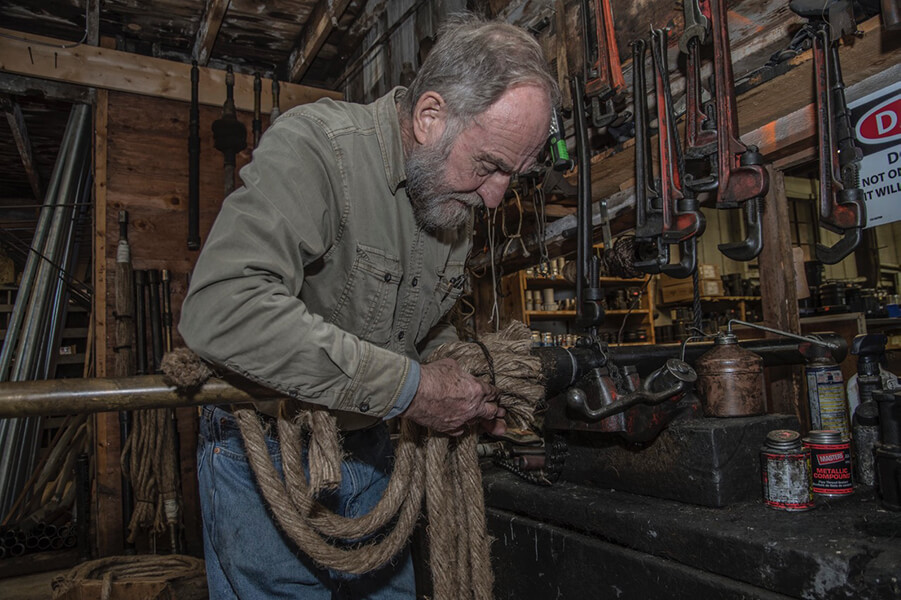
Charlie ties just to the stuffing box of the packer.
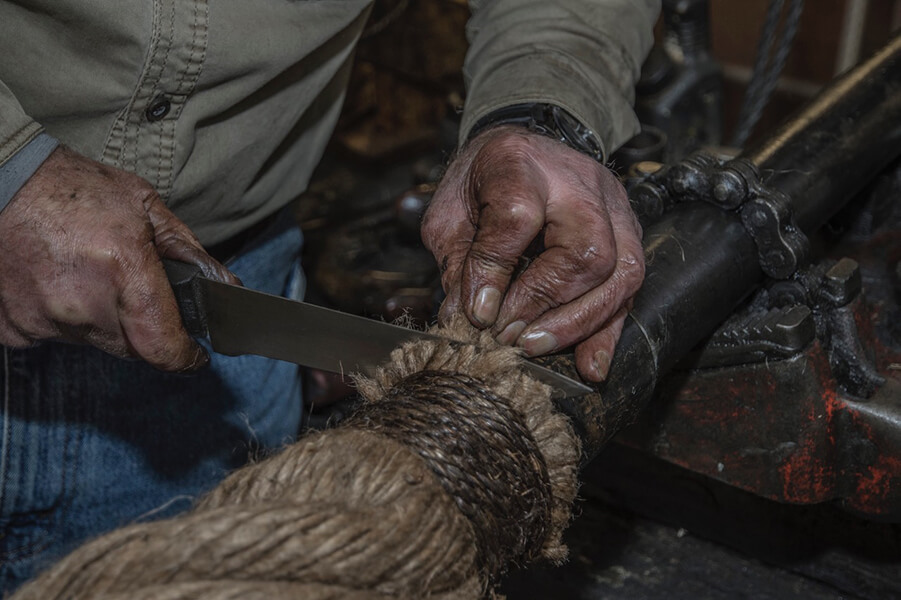
Loose ends of the jute are trimmed. The stuffing box is beneath Charlie’s left hand.
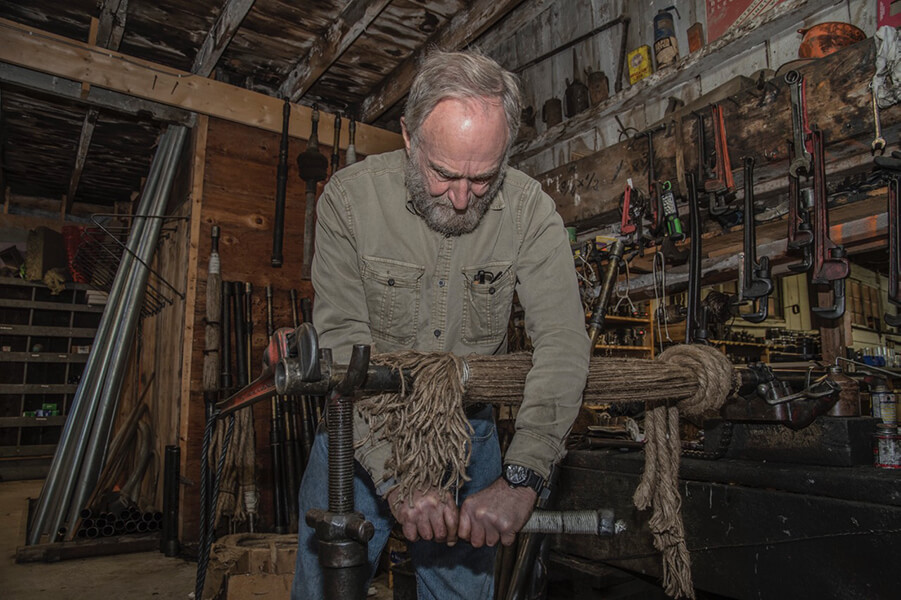
The jute is tied to the centre collar of the slide mechanism.
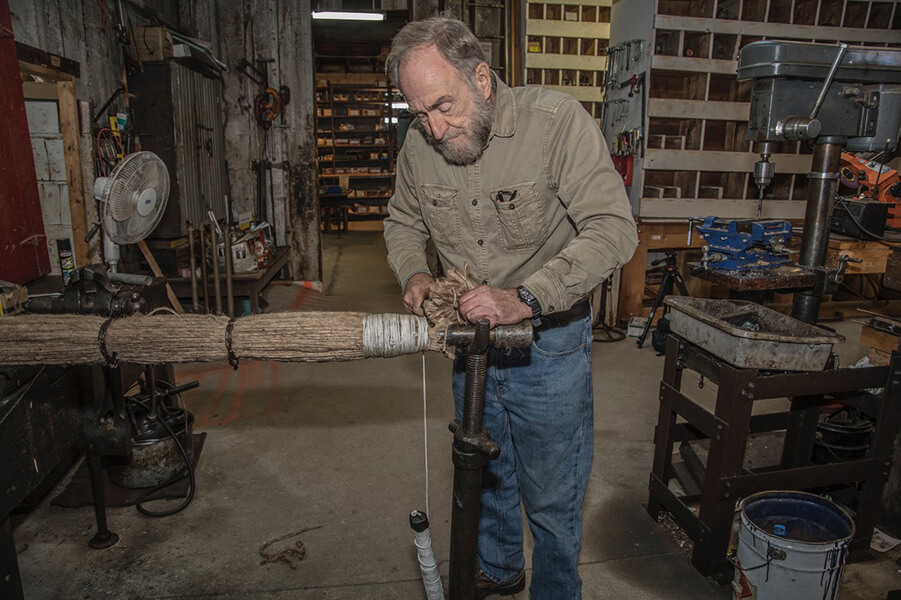
This is cutting the jute at the tapered end on the top packer tie.
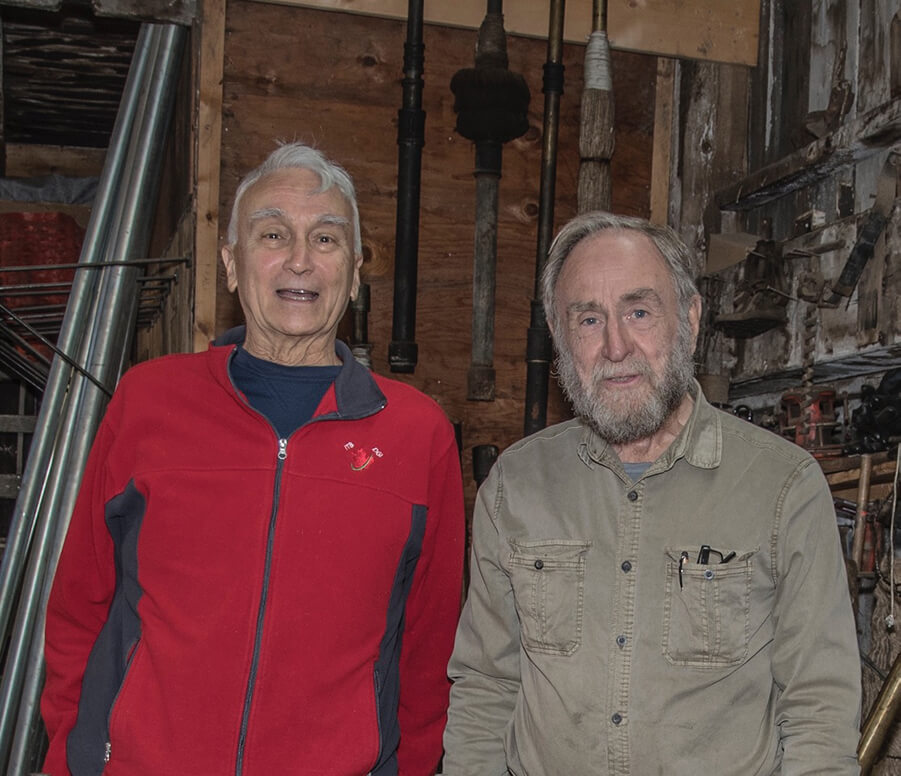
Bill Knight (left) and Charlie Fairbank have friends since the age of six. On the wall behind them are four stages of the packer: Left to right – The packer shell, the packer as it appears as it is down the well, the internal mechanism, of the packer and the packer ready to be inserted in an oil well.
